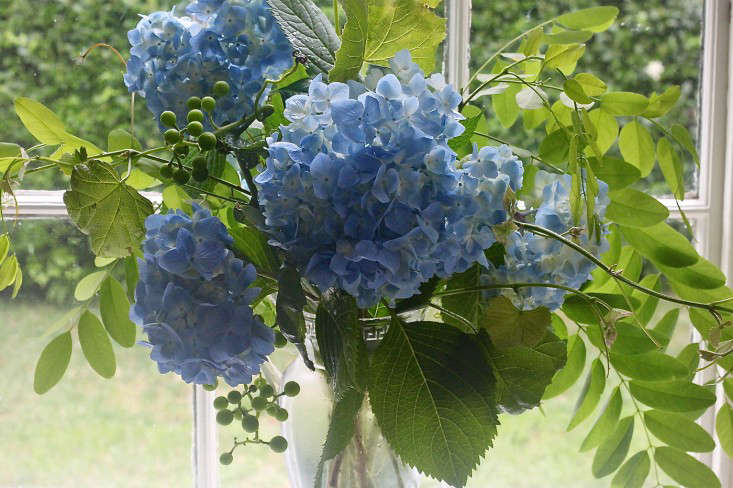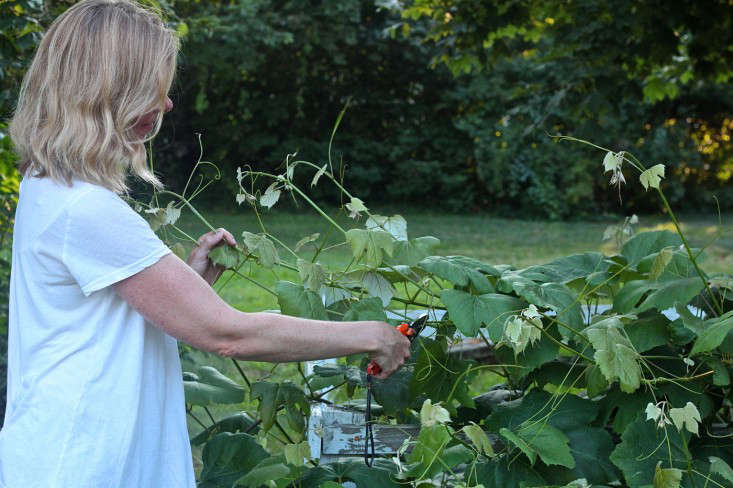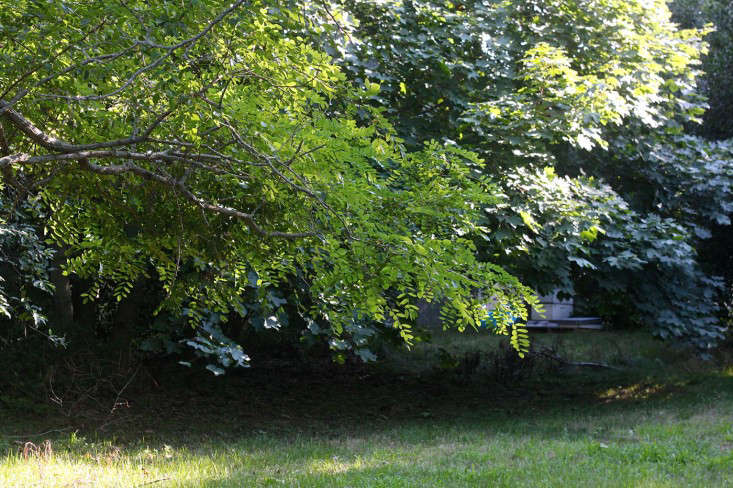When I was offered the assignment to make a hydrangea bouquet, I was skeptical. It’s well known that Gardenista harbors pro-pom-pom sympathies. But why did Michelle choose to ask me if I wanted to create a DIY bouquet with summer’s favorite bloom?
There was only one reason, I figured. Michelle had turned to the resident Cape Codder because, let’s face it, hydrangeas reign supreme here.
“Err, trouble is, Michelle,” I said, “I don’t actually like hydrangeas.”
Dead silence on the other end of the line. Clearly I had committed a floral faux pas.
If I can judge by the number of hydrangeas in New England landscapes, my opinion is in the minority. But I guess something has to be done with them. So despite my initial objections, I accepted Michelle’s assignment, treating it as a design challenge. Could I create a hydrangea bouquet that even haters would love?
Photography by Justine Hand.
Above: Because I have no hydrangeas in my yard, my friend Alexandra kindly donated a few of hers to my project. (OK, I have to admit, they do look lovely in the amber light of dusk.)
My main problem with hydrangeas is that they’re so common on Cape Cod they’ve become a cliché. One too many quaint cottages with hydrangeas, and I want to bury my head in the sand. I respond to the area’s more dramatic, windswept landscapes, with the textured grasses and hardy natives. Hydrangeas feel too cultivated, too precious.
So once I’d agreed to create a bouquet, my first thought was that prim hydrangeas might benefit from a walk on the wild side. Maybe I could I add a little Danny Zuko to their Sandy (to use a Grease reference)? I set out in search of some unruly locals.
Above: Though these grapes are cultivated in my grandparents’ yard, their wild cousins are abundant along Cape Cod’s shores. The creeping vines, vibrant green leaves, and dripping fruit seemed the perfect counterpoint to hydrangea’s neat blue pom-poms.
Above: Almost as ubiquitous as hydrangeas (but far less adored by Cape Codders), locusts are considered a weed tree. But these scrappy trees have sweeping boughs that would lend an informal grace to hydrangea’s pert blooms.
Above: Specimens in hand, I was ready to arrange. (Photograph by my friend Alexandra.)
 Above: Prepping the stems. Hydrangeas were named for the Greek word “hydro” (which means water) and they need lots of it. But their ability to draw water is compromised once cut. My local florist recommends making a long diagonal cut on each stem to prolong their life as cut flowers. Others swear by smashing the stems. I tried both and found the long diagonal slice worked best.
Above: Prepping the stems. Hydrangeas were named for the Greek word “hydro” (which means water) and they need lots of it. But their ability to draw water is compromised once cut. My local florist recommends making a long diagonal cut on each stem to prolong their life as cut flowers. Others swear by smashing the stems. I tried both and found the long diagonal slice worked best.
There’s not much research on how to keep cut grapevines or locust boughs looking fresh, so I experimented with three methods: smashing the stems, making long diagonal slices, and giving them a simple 45-degree cut. I found that grapevines prefer to be smashed, while the locust lasts longer with a simple cut.
Above: Arranging the flowers, I began by placing the hydrangeas toward the center of the vase. Then I worked the wilder greens in around the edges (up high and down low) to create a cascading, overgrown effect.
Above: To me, pairing hydrangea with its more feral neighbors enhances its bountiful appeal.
 Above: The acid greens of the grape and locust also complement what I consider the “tricky” blue of hydrangeas.
Above: The acid greens of the grape and locust also complement what I consider the “tricky” blue of hydrangeas.
Above: In my cottage window, my wild hydrangea arrangement pays homage to Cape Cod without being too predictable.
Above: A closeup shows why this arrangement has even made a convert of me.
Want more hydrangeas? See our quick Field Guide. And here’s a hydrangea-blue landscape that even I love: Tiina Laakonen’s home on Remodelista, at Rhapsody in Blue: A Finnish Stylist at Home in the Hamptons.
Finally, get more ideas on how to successfully plant, grow, and care for hydrangea with our Hydrangea: A Field Guide.
Finally, get more ideas on how to plant, grow, and care for various shrubs and hedges with our Shrubs: A Field Guide.















Have a Question or Comment About This Post?
Join the conversation